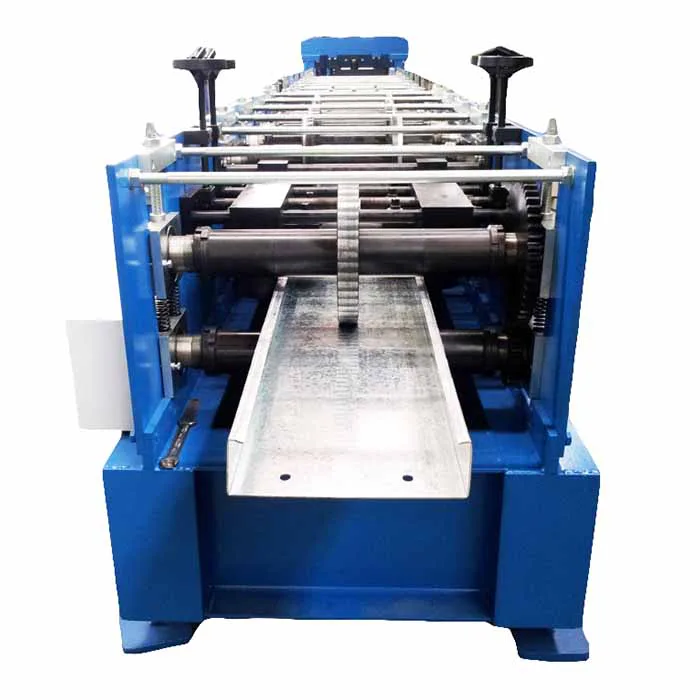
Understanding the Manufacturing and Quality Standards for Plate Bender Machines
- By:Metmac
- 2024-09-11
- 163
Introduction:
The manufacturing industry heavily relies on plate bending machines for shaping and forming metal plates into complex and precise configurations. These machines employ various techniques to achieve the desired bends, necessitating adherence to stringent manufacturing and quality standards to ensure optimal performance and safety. This article provides a comprehensive overview of these standards and their importance in the production of plate bending machines.
Material Selection and Crafting
Plate bending machines are constructed from high-strength materials, typically steel or cast iron, to withstand the immense forces involved in bending metal plates. The quality of these materials is paramount, ensuring durability, rigidity, and resistance to deformation. Furthermore, precise machining and fabrication techniques are employed to create components with accurate dimensions and tolerances, minimizing friction and wear.
Design and Engineering
Rigorous design and engineering principles are applied to ensure the structural integrity and functionality of plate bending machines. Engineers consider factors such as load capacity, bending force, and material thickness to determine the machine’s specifications. Finite element analysis (FEA) and other advanced engineering tools are utilized to optimize designs, minimize stress concentrations, and ensure efficient force distribution throughout the machine.
Hydraulic and Control Systems
Hydraulic systems are crucial for generating the immense force required for plate bending. The quality and reliability of hydraulic pumps, valves, and cylinders directly impact the machine’s performance. High-precision pressure sensors and electronic controllers ensure accurate control of hydraulic pressure and bending force, enabling precise and consistent results.
Electrical Systems and Safety Features
Electrical systems play a vital role in controlling the machine’s functions and ensuring operator safety. High-quality electrical components, including circuit breakers, motors, and wiring, are essential for reliable operation. Furthermore, advanced safety features such as emergency stop buttons, interlocking guards, and light curtains protect operators from potential hazards during operation.
Testing and Inspection
Comprehensive testing and inspection procedures are conducted throughout the manufacturing process to verify the machine’s performance and compliance with quality standards. These tests include load testing, accuracy checks, and functional evaluations. Additionally, non-destructive testing methods, such as ultrasonic and magnetic particle inspection, are employed to detect any internal defects or imperfections.
:
Understanding the manufacturing and quality standards for plate bender machines is indispensable for businesses seeking reliable and efficient metal forming equipment. By adhering to these standards, manufacturers ensure that their machines meet the demanding requirements of industrial applications, delivering precise, consistent, and safe performance over an extended lifespan.
-
Metal Sheet Forming Machine: The Engine of Modern Fabrication and the METMAC Standard
2025/12/30 -
Laser Cutting Machine for Steel Plate: Precision Redefined for Modern Fabrication
2025/12/30 -
Metal Curving Machine: Shaping Strength with Precision and the Art of METMAC Engineering
2025/12/30 -
Shear Metal Cutting Machine: Precision, Power, and the METMAC Standard
2025/12/30
-
Advanced Sheet Metal Rolling, Laser Cutting, and Folding Machines for Precision Fabrication
2025/10/31 -
High-Performance Sheet Metal Bending and Cutting Machines for Modern Fabrication
2025/10/31 -
High-Quality Sheet Metal Equipment for Sale: Efficient Solutions for Modern Manufacturing
2025/10/31 -
High-Performance Sheet Metal Equipment for Sale: Forming and Shearing Solutions for Modern Fabrication
2025/10/22
-
Understanding the Role and Function of Steel Strip Slitting Machines
2024/05/11 -
Maintenance Tips for Longevity of HVAC Duct Machines
2024/05/11 -
Innovations in Steel Strip Slitting Machine Design and Technology
2024/05/11 -
Improving Accuracy in Metal Fabrication with Laser Metal Shear Machines
2024/05/11
-
A Guide to the Latest Innovations in Sheet Metal Folding Machines
2024/11/29 -
Key Features to Consider When Investing in a Sheet Metal Folding Machine
2024/11/28 -
Enhancing Precision with Advanced Sheet Metal Folding Machines
2024/11/27 -
How to Choose the Right Sheet Metal Folding Machine for Your Workshop
2024/11/26







